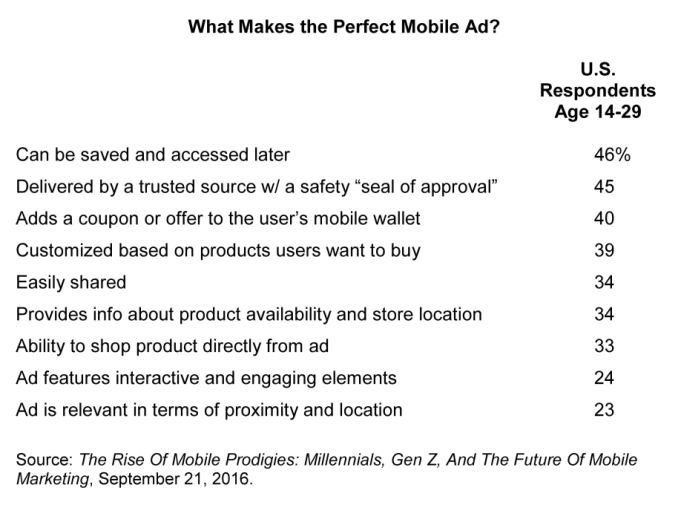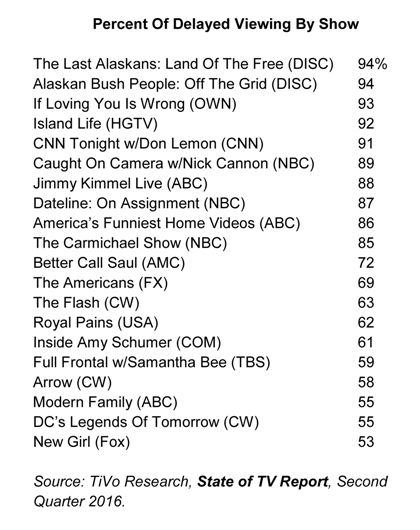
Media Matters goes beyond simply reporting on current trends and hot topics to get to the heart of media, advertising and marketing issues with insightful analyses and critiques that help create a perspective on industry buzz throughout the year. It's a must-read supplement to our research annuals.
Sign up now to subscribe or access the Archives
Teens' and millennials' receptivity to mobile advertising got a boost with the May 2016 report, The Rise Of Mobile Prodigies: Millennials, Gen Z, And The Future Of Mobile Marketing, released by Verve Mobile. Turns out their definition of a "perfect" ad has less to do with relevance and more to do with being able to save and share it.
Verve Mobile surveyed 3,000 14-29-year-olds, whom they coin "mobile prodigies," about which features would make the "perfect" mobile ad. As the table reveals, almost half said they wanted ads that can be saved and accessed later and one-third felt it important to be able to "easily share." This flies in the face of the ad-naysayers who claim that digital ads are annoying to pretty much everyone!
Less surprising is that these mobile prodigies want the personal touch when it comes to ads, with proximity, location and products that interest them key factors in a "perfect" ad.
Hopefully the new standards and guidelines that the IAB recently announced will go a long way in allowing advertisers to create digital ads that are more entertaining, user-friendly and interactive across all platforms. They may not be "perfect," but they could certainly be better!

TiVo Research's recently-released State Of TV Report for the second quarter of 2016 provides us with an up-to-date portrait of time-shifted TV viewing in the United States. The data is culled from its Media TRAnalytics® platform, which collects data from more than two million set-top boxes on a second-by-second basis.
Looking at the big picture, in general, television (total day) is still mostly watched live, with 91% of cable networks and 80% of broadcast networks viewed on a live basis. In primetime, the numbers decline only slightly, to 88% and 74% respectively. Among broadcast networks, the CW benefited the most from time-shifted viewing, with 37% of its primetime lineup viewed on a delayed basis. Among the top 10 rated cable channels, however, delayed viewing hovered in the 10% range across the board, with the exception of MSNBC, which registered 1-3 day delayed primetime viewing at almost 20%, for reasons unknown.
Things get a little more interesting when the study turned to individual shows, although we must bear in mind that these are selected shows, and do not represent the full range of delayed-view programs, nor do they demonstrate the relationship between actual ratings and the percentage of delayed viewing. As shown in the table below, there was quite a range in the types of popular time-delayed programs. Upon reflection, there's a commonality among many of these programs topping the list. People with DVRs still tend to be more educated, affluent, and younger than the general population. Critically-acclaimed shows like Better Call Saul and The Americans appeal to the well educated.Late night shows like Jimmy Kimmel, as well as sci-fi/adventure shows like DC's Legends Of Tomorrow appeal to younger viewers. Modern Family has always had an audience among the affluent, who might also be likely to be recording America's Funniest Home Videos to watch with the young children at a more convenient hour. We were a little disconcerted by the runaway popularity of the "Alaskan" programming (The Last Alaskans and Alaskan Bush People), which garnered the highest percentage of delayed viewing at 94% each. We assume that viewers must delay watching such shows until after their Doomsday prepping has been accomplished for the day.
In any case we look forward to ongoing reports from TiVo Research, to see how delayed-viewing habits continue to change over time.
